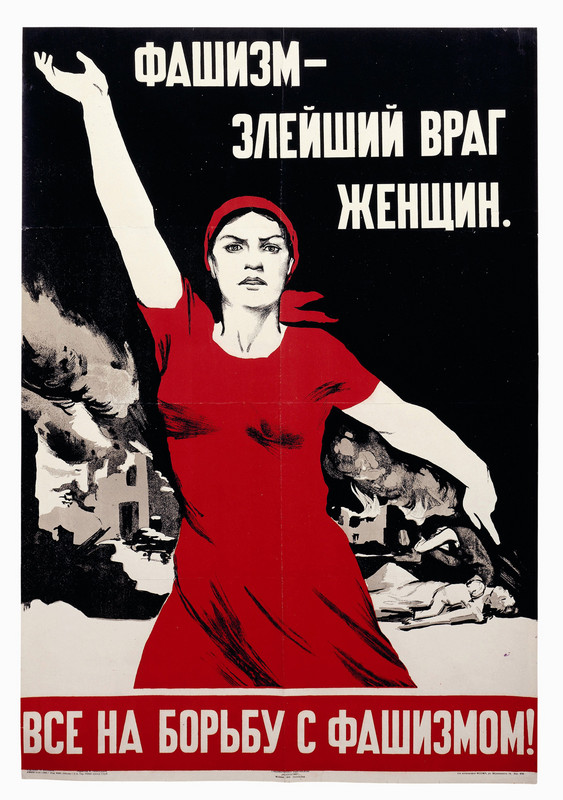Russian Revolutionary Posters
01 Jul 2013 - 24 Aug 2014
The ideals and illusions of the Russian Revolution and the Soviet Union are reflected in this display of street posters.
‘Ten Days that Shook the World’ was how the American journalist John Reed described the 1917 October Revolution. The disasters of the First World War had led to the collapse of the Tsar’s autocracy. Promising peace and the re-distribution of land, Lenin’s Bolshevik Party seized power. Supported by militant soldiers, workers and peasants, they declared the world’s first Communist state.
To win support for their ideas, the Bolsheviks took control of the printing presses. Despite a shortage of supplies and equipment, they rapidly produced newspapers, leaflets and posters. This proliferation of colourful propaganda posters transformed towns and cities, creating a street art available to all. The continual renewal of images, as well as multiple copies pasted up together, reinforced the fundamental messages of communal power and solidarity. Lenin and the Bolshevik leaders were portrayed as heroically unifying, while their enemies in the Civil War were reviled.
After Stalin became leader in 1927, the propaganda machine promoted the collectivisation of land and the drive for industrialisation, oblivious to the terrible hardships caused by these policies. Stalin’s benevolent image was everywhere, but it barely masked the terror of the show trials and executions that blighted the 1930s. The revolutionary fervour conveyed through the early posters now enforced a repressive dictatorship.
The ideas and illusions conveyed in these posters were far from reality. However, the posters themselves became part of the texture of everyday life in the Soviet Union, and reflect the officially approved history as it was experienced by its citizens.
‘Ten Days that Shook the World’ was how the American journalist John Reed described the 1917 October Revolution. The disasters of the First World War had led to the collapse of the Tsar’s autocracy. Promising peace and the re-distribution of land, Lenin’s Bolshevik Party seized power. Supported by militant soldiers, workers and peasants, they declared the world’s first Communist state.
To win support for their ideas, the Bolsheviks took control of the printing presses. Despite a shortage of supplies and equipment, they rapidly produced newspapers, leaflets and posters. This proliferation of colourful propaganda posters transformed towns and cities, creating a street art available to all. The continual renewal of images, as well as multiple copies pasted up together, reinforced the fundamental messages of communal power and solidarity. Lenin and the Bolshevik leaders were portrayed as heroically unifying, while their enemies in the Civil War were reviled.
After Stalin became leader in 1927, the propaganda machine promoted the collectivisation of land and the drive for industrialisation, oblivious to the terrible hardships caused by these policies. Stalin’s benevolent image was everywhere, but it barely masked the terror of the show trials and executions that blighted the 1930s. The revolutionary fervour conveyed through the early posters now enforced a repressive dictatorship.
The ideas and illusions conveyed in these posters were far from reality. However, the posters themselves became part of the texture of everyday life in the Soviet Union, and reflect the officially approved history as it was experienced by its citizens.

